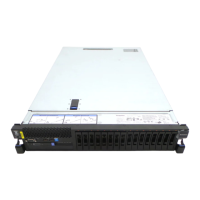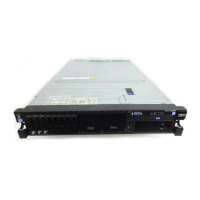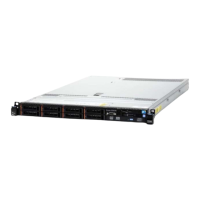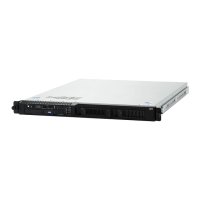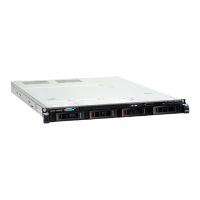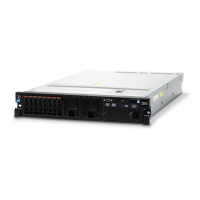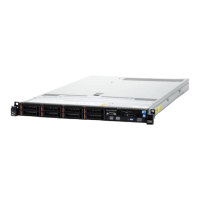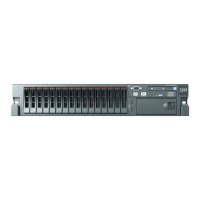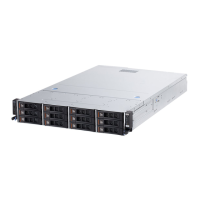page 159, “Locally: LAN over USB” on page 160, and “Remotely over a LAN” on
page 161. The following conventions apply to the command syntax:
v Variables are shown in italics.
v Optional parameters are enclosed in brackets ([ ]). Do not type the brackets in
the commands. If you omit an optional parameter, the default is used.
v Although the command syntax is shown in mixed case, the commands are not
case sensitive.
Locally: Keyboard Controller Style (KCS)
Use this information for instructions on how to use the locally Keyboard Controller
Style (KCS) method to update the UUID.
Procedure
This access method uses the IPMI/KCS interface. The IPMI driver must be
installed; with some operating systems, the IPMI driver is installed by default. The
Advanced Settings Utility (ASU) provides the corresponding mapping layer.
To update the UUID, in the ASU command-line interface, enter the following
command:
asu set SYSTEM_PROD_DATA.SysInfoUUID uuid
where uuid is the user-assigned hexadecimal value, up to 16 bytes, that identifies
the server.
To update the DMI/SMBIOS data, complete the following steps:
1. In the ASU command-line interface, enter the following command:
asu set SYSTEM_PROD_DATA.SysInfoProdName xxxxyyy
where:
xxxx is the 4-digit machine type of the server.
yyy is the 3-digit model number of the server.
2. Enter the following command:
asu set SYSTEM_PROD_DATA.SysInfoSerialNum zzzzzzz
where zzzzzzz is the 7-character serial number of the server.
3. Enter the following command:
asu set SYSTEM_PROD_DATA.SysEncloseAssetTag
aaaaaaaaaaaaaaaaaaaaaaaaaaaaaaaaa
where aaaaaaaaaaaaaaaaaaaaaaaaaaaaaaaaa is the 33-character asset tag number of
the server.
Chapter 3. Configuration information and instructions 159
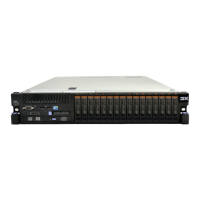
